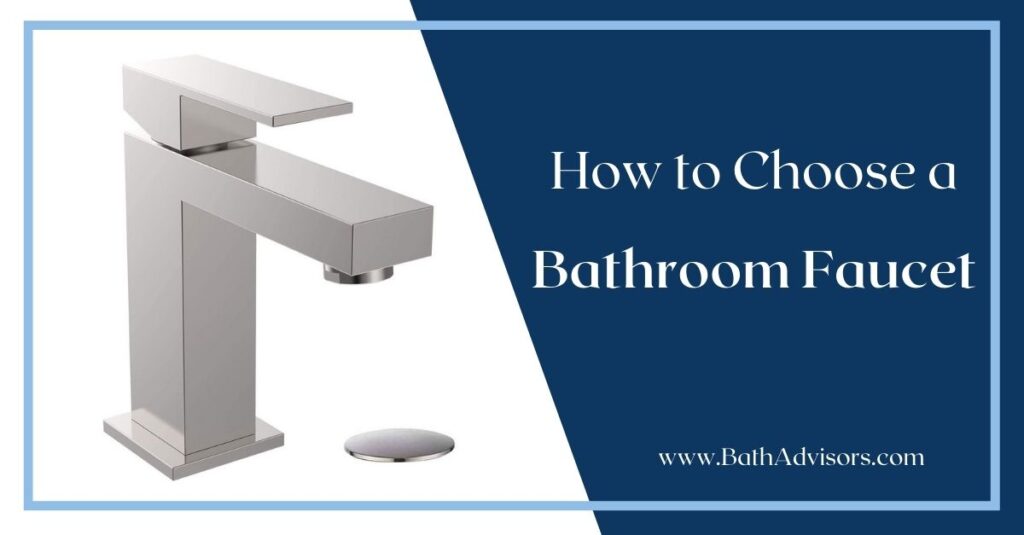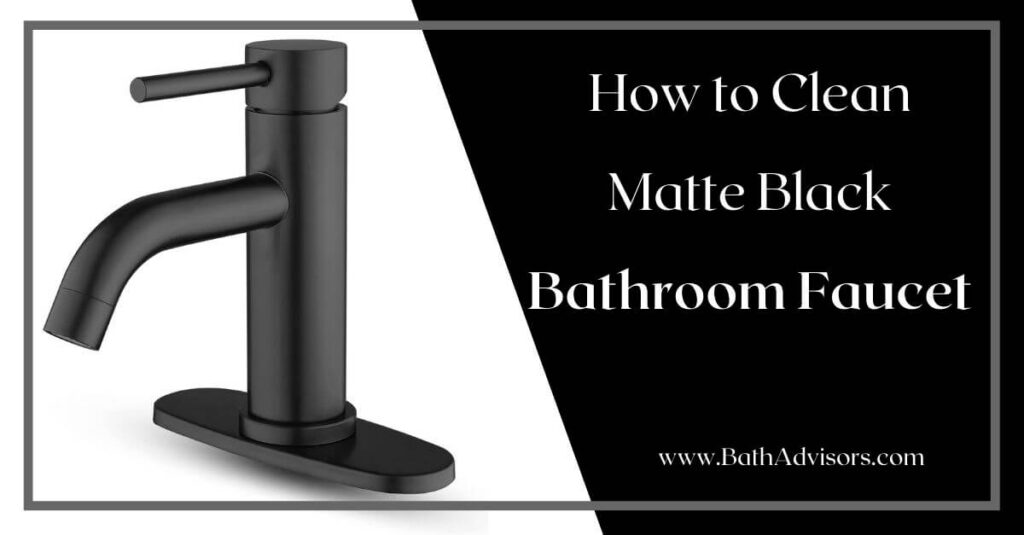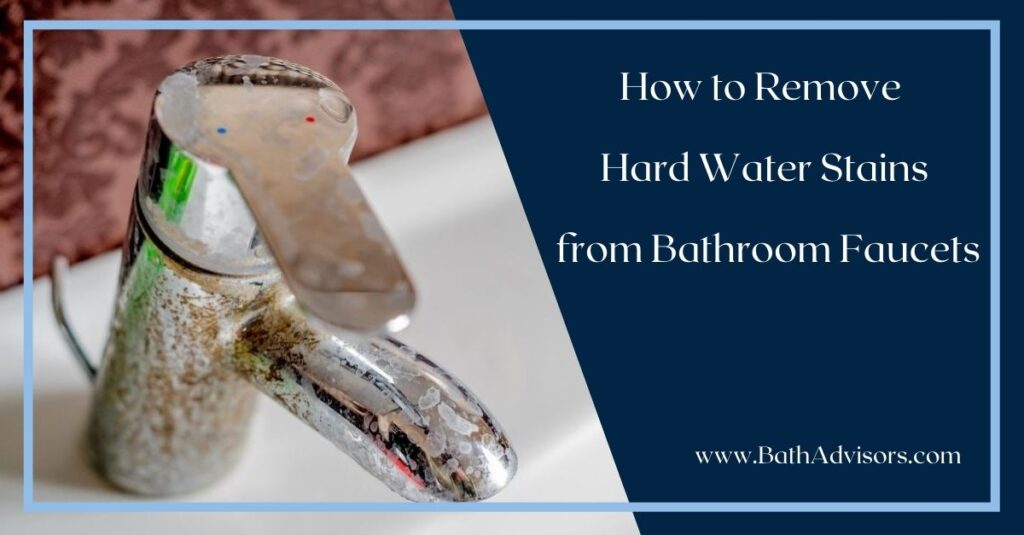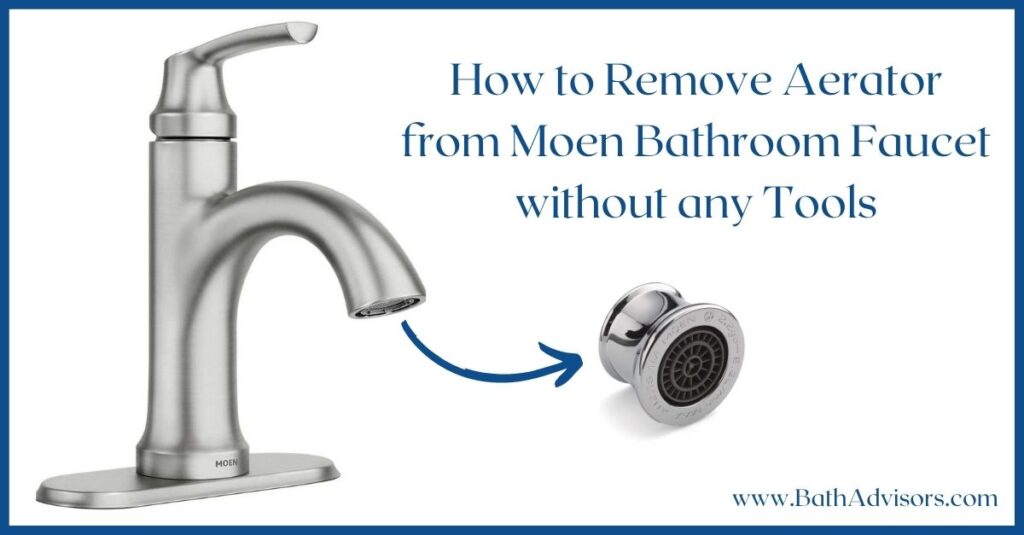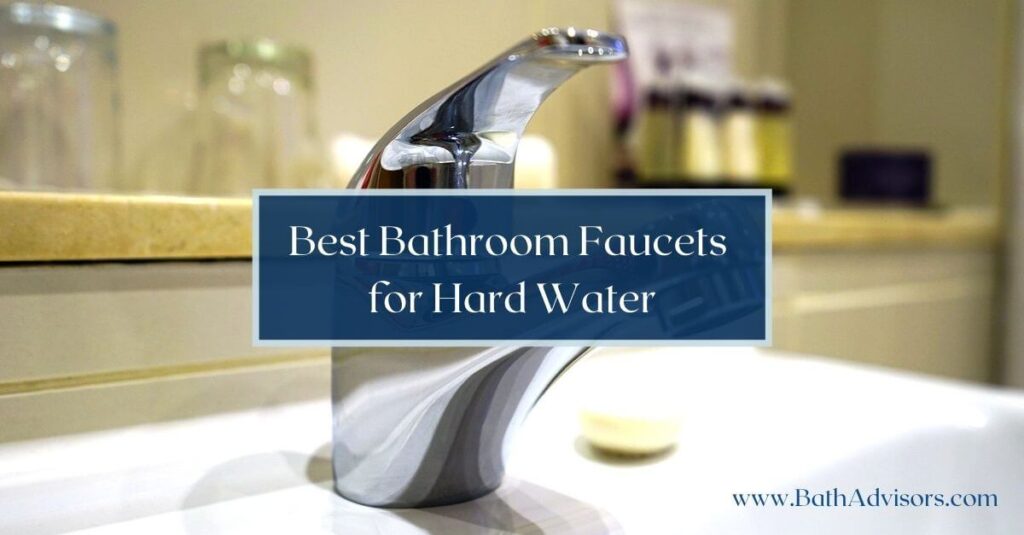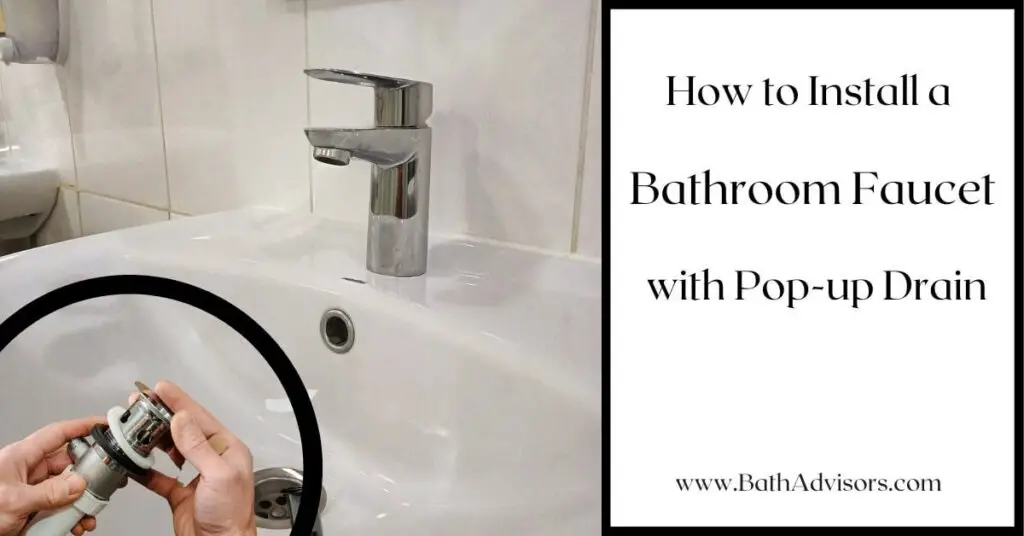Caulking around a bathroom sink faucet may not sound necessary, but it’s an essential addition to having a leak-free experience with the faucet. Caulk holds the faucet in place while it also prevents rusting up to some extent.
Should you caulk around a bathroom sink faucet? Yes, you should apply caulk around the faucet irrespective of the type and size of the faucet. In fact, caulking can prolong the lifespan of the faucet’s finish while keeping it secure with the sink.
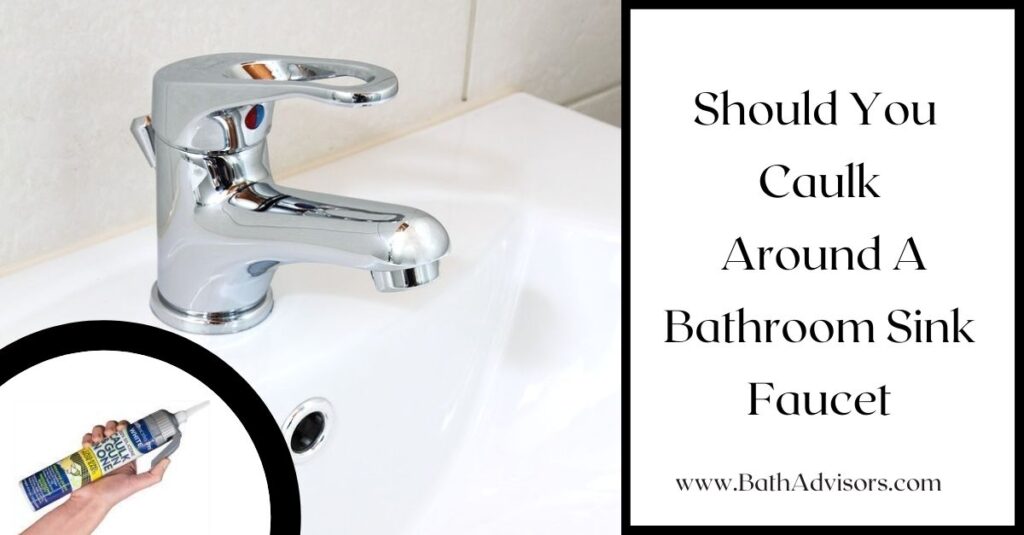
But how to apply caulk properly? In this article, you will find a step-by-step process to caulk around a sink faucet. Also, I’ve listed the common types of caulks that you can use for sealing the bathroom faucet with the sink.
Do I Need To Caulk Around The Bathroom Sink Faucet?
Is caulking really important? Should you caulk around a bathroom sink faucet? Well, if you ask any seasoned plumber, they will tell you the multiple advantages of caulking. Caulk doesn’t just create a watertight seal, but it is important to prevent the faucet and its handle from moving.
Here are a few benefits why you should caulk around the bathroom sink faucet:
1. It Helps Seal the Gaps
Caulk is probably the best bathroom faucet sealant to close the gaps around the faucet. Usually, there is a small gap left between the faucet and the sink hole in order to make the installation process easier. You can fill this gap using a good quality caulk.
2. Reduces Mildew Growth
When the water seeps inside the small gap between the faucet and the sink hole, it can lead to mildew growth. But if you put caulk inside this gap, you can prevent mildew growth.
Getting rid of mildew and mold can be a costly affair, but caulking is one of the cheapest solutions to this problem.
3. Prevents Insect Invasion
Insect invasion is not very common in sinks, but you may encounter it if the faucet is not caulked properly. Small insects can find their way through the loopholes and can make their nests inside the hollow spaces of the sink. Caulking around the faucet keeps the insects out.
Types of Caulk for Bathroom Sink Faucet
It is important to understand the types of caulks so that you can use the right one for your faucet. Some people prefer silicone caulk, while some choose adhesive caulk because of its grip. Below I have listed different types of caulks you can use with a bathroom sink faucet.
1. Silicone Caulk

This silicone sealant for sink faucet is the easiest to apply and dries quickly, so you don’t have to wait for too long to use the faucet. Also, it lasts longer and is available in the transparent option as well, and no one can find out that you have caulked the faucet.
However, silicone caulk is not ideal if the gap between the faucet and sink hole is big.
2. Latex Caulk

Mostly used by plumbers, latex caulk can easily seal a big gap. It is available in small tubes and can also be applied by hand. In addition, this caulk has an off-white color that’s easily visible. Lastly, it is 100% waterproof and keeps the faucet secure in place.
3. Adhesive Caulk
This type of caulk is least used around the bathroom sink faucet, but if you have no other option available, you can use it. The biggest perk of using an adhesive faucet is that it stays in place for longer and prevents the growth of mold while protecting the sink from insect invasion.
How to Caulk Around the Bathroom Sink Faucet?
Caulking is easy but requires precision, and you need to do it the right way so that the caulk settles properly. Below I’ve listed the entire process you need to follow to apply caulk around the faucet.
Things You Need
- Caulk (I prefer clear silicone caulk)
- Paper towels
- Rubber gloves
- Caulking gun
- A chisel
Step 1: Prepare the Faucet
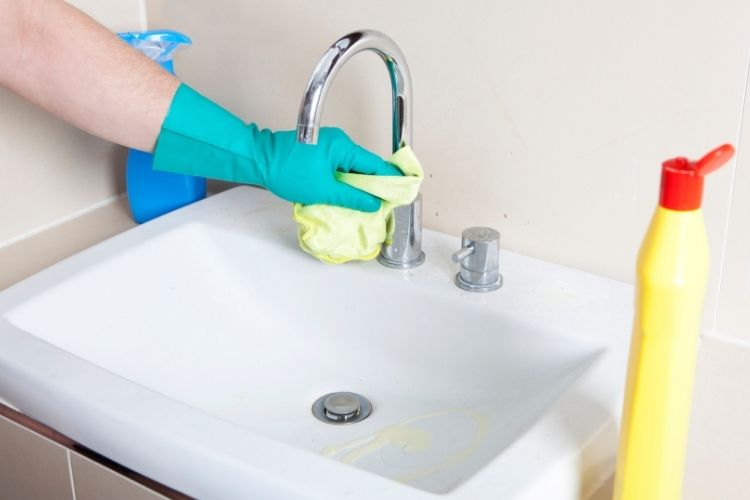
Start with cleaning the faucet surrounds using paper towels. Next, you need to clean the mildew and grime. If required, use a chisel to clean the stubborn dirt, and then clean it with a towel again.
Step 2: Load the Caulk into the Gun
Applying caulk around a sink faucet requires precision, so you must use a gun for this task. Load the caulk tube inside the gun, and poke a prick-sized hole carefully.
The hole should not be too big or small, and it should easily push the caulk in a good amount. Here’s how to load a caulk tube in a gun for proper application.
Step 3: Apply the Caulk
With a steady hand, press the caulking gun, and then carefully caulk around the faucet base. Make sure to cover the entire gap and try to fill the empty space.
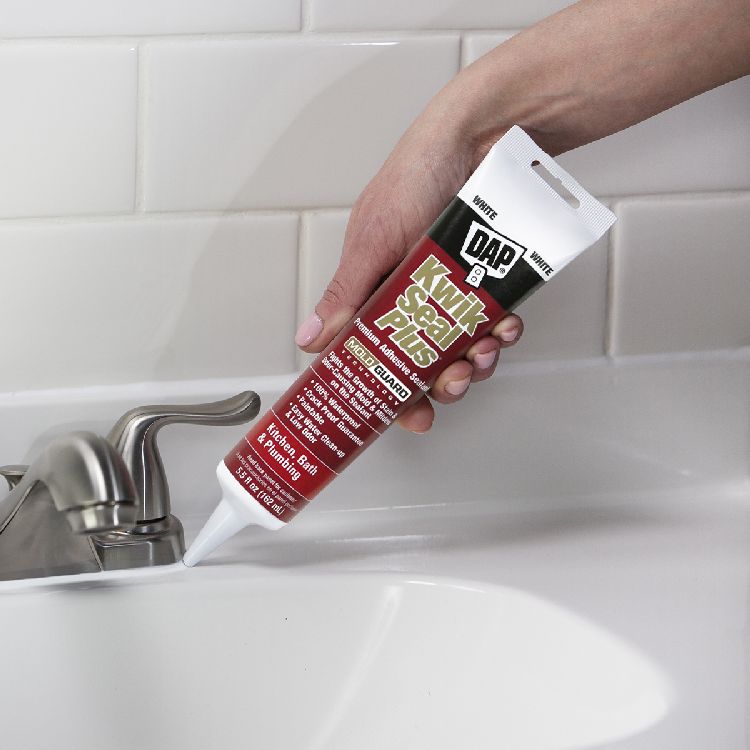
Image Credit: Dap.com
Wait for 10-15 minutes after applying one coat, and then reapply another coat to create a watertight seal.
Step 4: Spread the Caulk Using Your Finger
One problem when applying caulk with a gun is that you don’t get the required finish. So, you need to spread it with your finger. Wear a rubber glove, and spread the caulk evenly around the faucet. Also, try to insert the caulk inside the gap to seal it properly.
Step 5: Let the Caulk Dry
Now leave the caulk as it is, and do not use the faucet for a few hours. If you live in an area with a hot climate, the caulk will settle within 5-7 hours, whereas, in colder areas, it may take up to 24 hours.
FAQs
Q1: How Long does Caulk last around a Sink Faucet?
A1: Generally, caulk can last around 12 months. However, it depends on the type of caulk you have used and how you have applied it around the sink faucet.
Q2: How to Prevent Mold Formation on Caulk applied on Bathroom Sink Faucets?
A2: If you see mold formation around the caulking, it is due to the structural deformities, or you have not applied the caulk properly. If the water seeps inside the caulk, it will definitely result in the growth of mold. Remove the caulk using a chisel, and reapply it properly to get rid of this issue.
Q3: Should I use a Caulk or Plumbing Putty to seal the Sink Faucet?
A3: Caulk is a better choice than plumbing putty since it creates a watertight seal and dries quickly. You can even use a plumbing putty in case caulk is not available.
Q4: How to seal a Sink Faucet to Granite Counters?
A4: The process of sealing a sink faucet to granite counters is no different from sealing it to a sink. The only difference is that granite counters have bigger holes, so you may need to apply more caulk.
Also, only use clear silicone caulk, as the white latex caulk may not look good on a black granite counter.
Q5: Is it important to Caulk around the Bathroom Sink Drain?
A5: Yes, you should caulk around the bathroom sink drain as well to create a watertight seal. Usually, professional plumbers apply caulk around the sink drain when installing it. However, if you are installing the drain yourself, make sure to apply the caulk properly.
Final Thoughts
Applying caulk around the bathroom sink faucet is important, and you should do it the right way. Always use a good quality caulk that lasts longer and helps create a watertight seal.
Also, it should be non-hazardous and should not react to sink cleaning chemicals. Lastly, reapply the caulk when required, and seek professional plumbing help if you are not able to seal the sink faucet hole properly.

